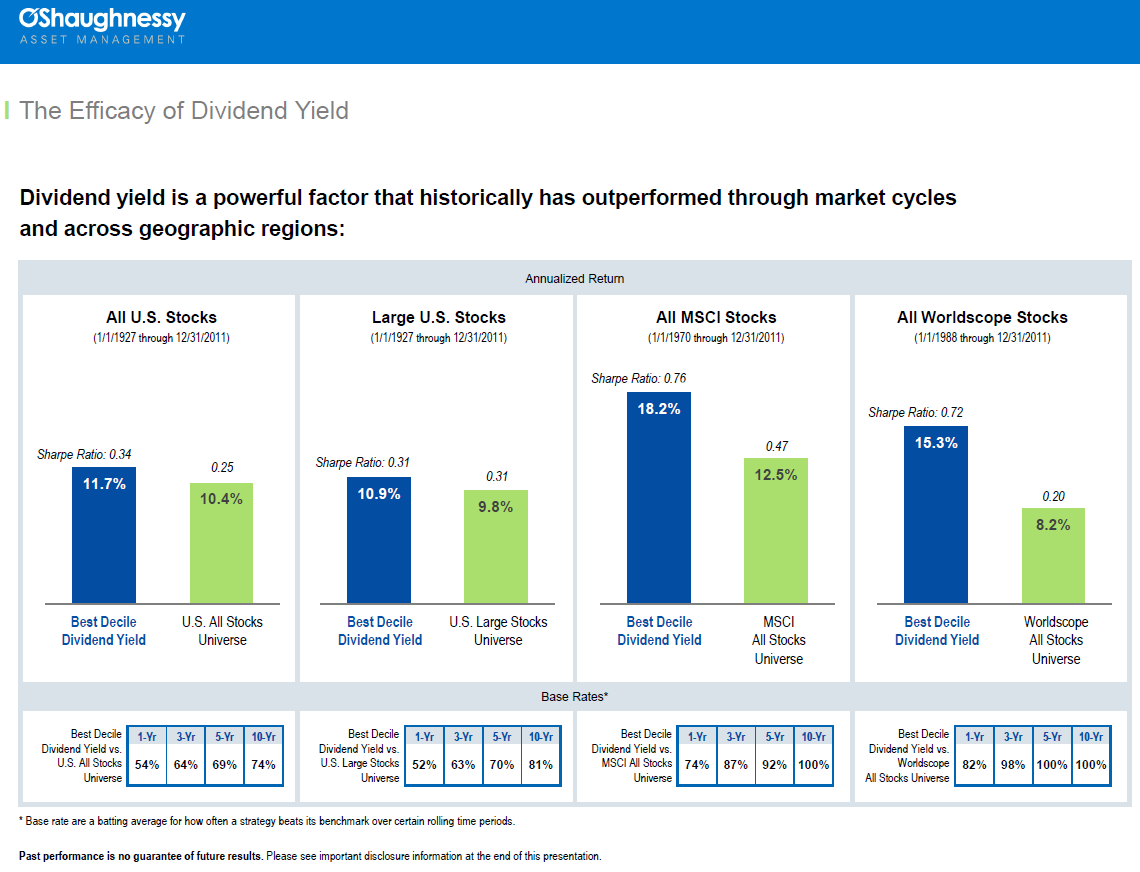by Michael Tarsala
Dividend stocks are no panacea, though some money managers are starting to lean on them more heavily as a way to get paid for taking on added risk following the market’s more than 25% runup since the October lows.
“I believe we’re still in a secular bear market, so I think the averages five years will be roughly where they are now,” said Bill DeShurko at 401 Advisor, manager of Covestor’s Dividend and Income Plus model. “So if you buy non-dividend stocks, I see your portfolio going nowhere. But if you buy dividend payers and reinvest the gains, that’s where you can still profit.”
They are more than just a defensive play, though. Over time, data suggest that top dividend payers have a history of outperformance, both in the U.S. and globally.
Here’s a great graphic from O’Shaughnessy Asset Management that makes the case:
 Source: O’Shaughnessy Asset Management
Source: O’Shaughnessy Asset Management
What is interesting is that the Sharpe ratios of top dividend payers also are higher over time, reflecting a greater reward relative to the risk.
So how do you go about finding high dividend-paying stocks?
You can screen for dividend yields fairly easy using Finviz.com. The ratio is simply the the dividend per-share for a given stock, divided by the price per share.
Be careful, though. When stock prices fall, dividend yields rise. So some of the worst stocks offer some of the highest dividend yields. They can be value traps.
Also, a high dividend does not mean much if a company cannot continue to pay it in the future.
Profits should give you a clue about a company’s future dividend-paying ability as will the quick ratio. It’s a company’s liquid assets divided by current liabilities. Zacks.com’s screening tool offers a way to sort stocks based on the current ratio.
Another thing you might want to calculate yourself is dividend cover… a company’s net income or cash flows available to cover the dividends paid to shareholders. If a company has $1 a share in earnings and pays an annual dividend of $0.20 a share, its dividend cover is 5. I have not found a simple way to screen for it, but those details can be found on either Finviz or Yahoo Finance.
Or you could look closer into DeShurko’s model, of course, as a way to gain exposure to an assortment of dividend payers.


